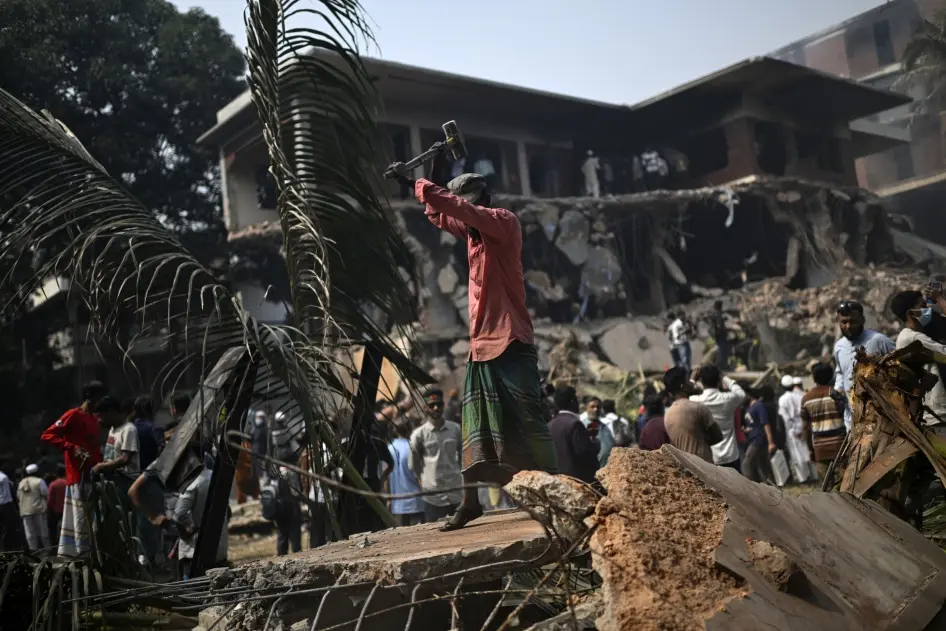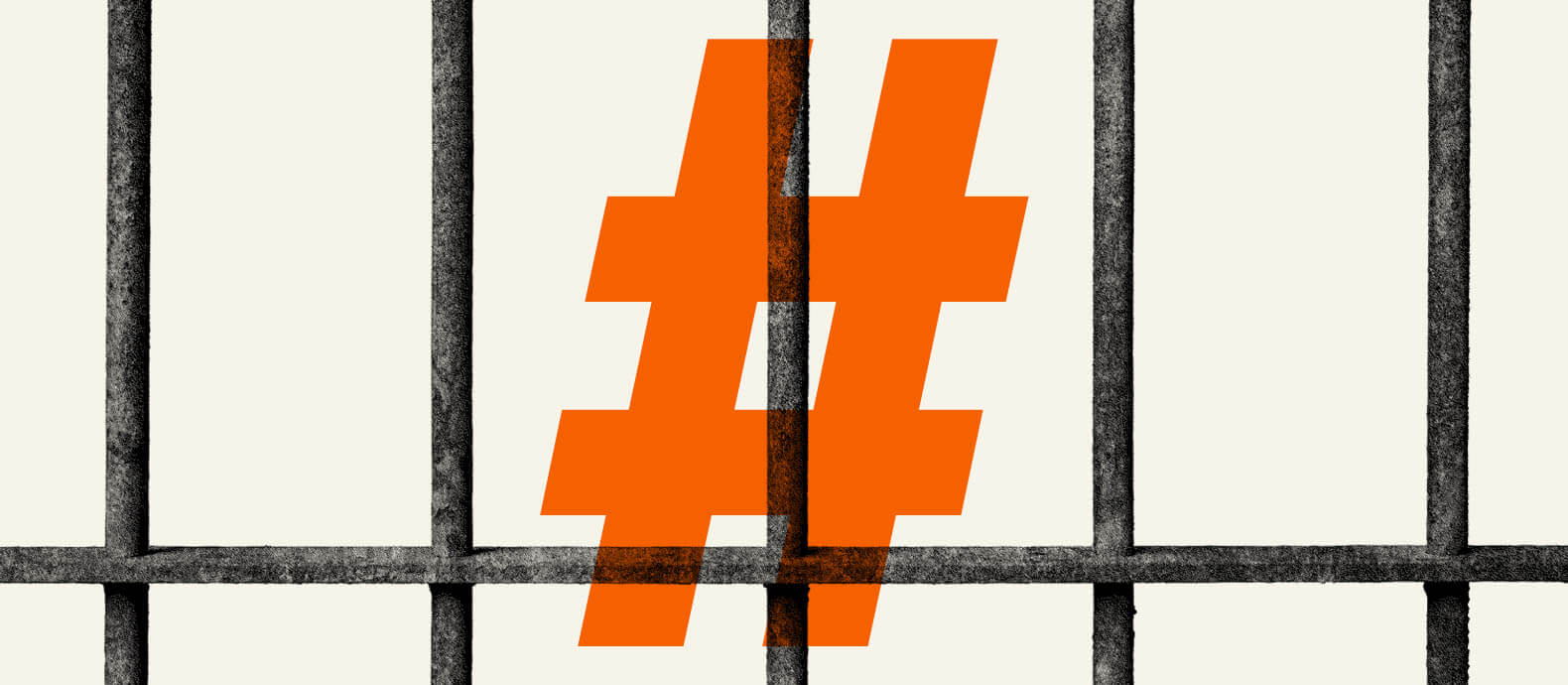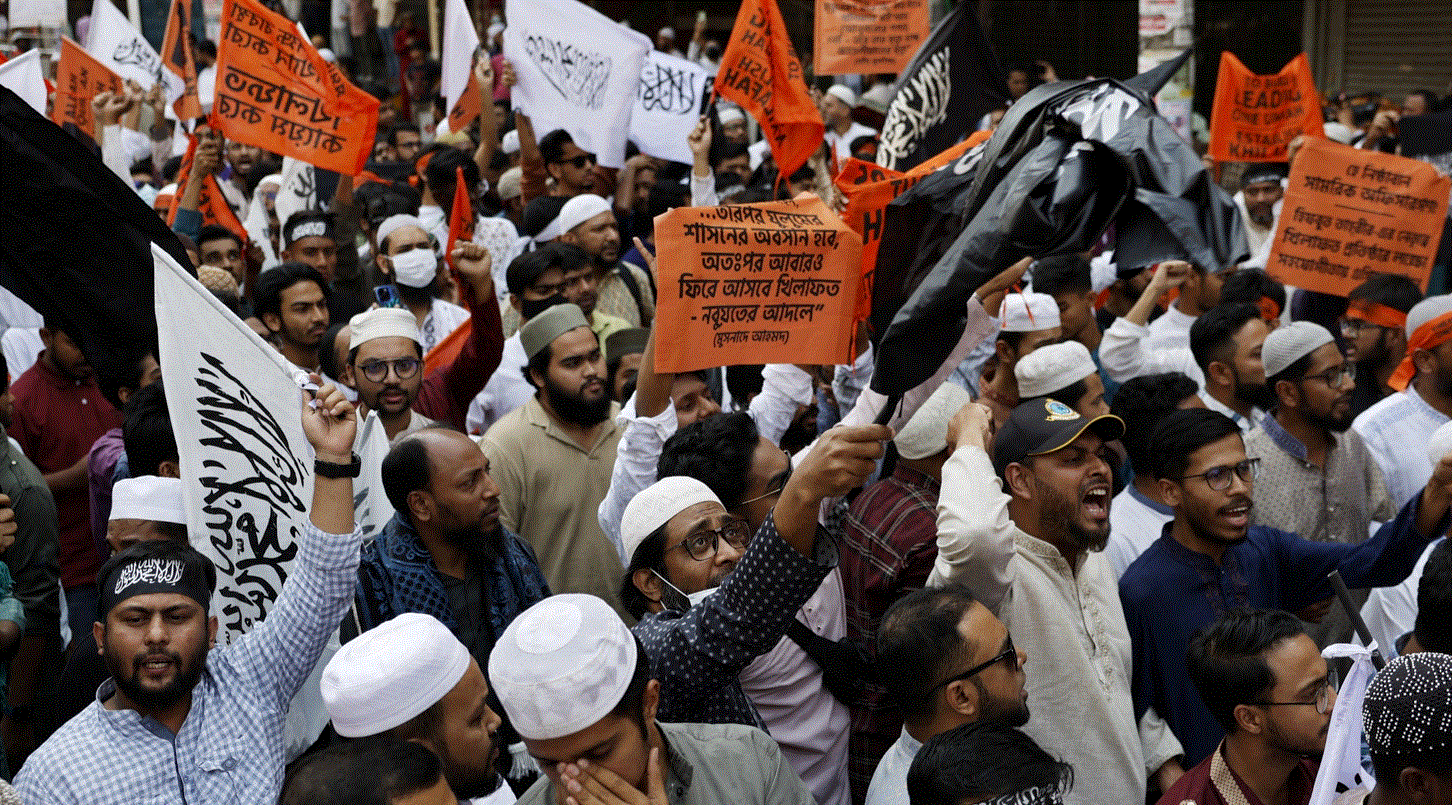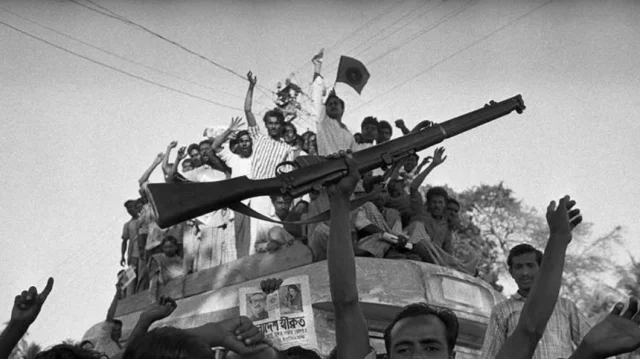In an era where change is broadcast live and justice is hashtagged, Generation Z has…

Demolition Of Religious, Cultural Properties And Historical Places In Bangladesh from August 2024 To August 2025
Professor Dr Szoha
After the fall of the Awami League government of Bangladesh on August 5, 2024, the country is facing plenty of crises across its whole premises with the emergence of the radicalist political powers in Bangladesh led by Dr. Muhammad Yunus, leader of a so-called student-backed government. The long-cherished heritage and culture of Bangladesh are under great threat from every path from the past and have caused many difficulties. A significant and concerning trend of demolitions and attacks on cultural and historical properties in Bangladesh has marked the period from August 2024 to August 2025. This destruction has been driven by a combination of political upheaval, communal sentiment, and a lack of effective legal enforcement. In the wake of recent political changes in Bangladesh, there has been a concerning surge in attacks on Sufi shrines, known as mazars or dargahs and heritage sites. These attacks, which include vandalism, arson, and looting, have been widely reported since August 2024.
Major Incidents and Trends
Following the political unrest in August 2024, there was a widespread campaign of vandalism and demolition targeting around 1,500 sculptures, murals, and memorials across the country [1]. 1,492 sculptures, relief sculptures (figures carved on a wall using ceramic or terracotta), murals and memorials were vandalized, set on fire and uprooted in 59 districts between 5 to 14 August. Most of the destruction and ignition occurrences happened on 5, 6 and 7 August. A total of 1,492 sculptures, relief sculptures, murals and memorials, including 273 in Dhaka division, 204 in Chattogram division, 166 in Rajshahi division, 479 in Khulna division, 100 in Barishal division, 129 in Rangpur division, 49 in Sylhet division and 92 in Mymensingh division, have been destroyed, evacuated and blazed [2]. A significant number of these were related to the Father of the Nation, Bangabandhu Sheikh Mujibur Rahman, and the Liberation War, but other cultural icons were also affected, including the statue of ‘Venus’ at Sashi Lodge, the statue of Lady Justice at the Supreme Court, and the Duronto statue of Shishu Academy. Mohammad Nasiruddin Memorial Bhaban in Old Dhaka, a historic residence that was partially demolished. This was seen as a politically and ideologically motivated effort to erase certain aspects of national history.
The demolition of Dhanmondi 32, the historical house of Bangabandhu and the Liberation War Museum. One of the most prominent incidents was the partial demolition of Bangladesh. The miscreants set fire to the Liberation War Museum of Agargaon and caused great loss. Apart from these, they set fire to the Independence Museum of Shurawardy Uddyan and looted the historical valuables. Across the country, the miscreants demolished Mujibnagar independence artifacts in Meherpur district, Bangabandhu’s murals and so on.
Attack on Mazar and Shrines
Sufism has a profound history in Bangladesh, playing a central role in the spread of Islam and shaping the region’s unique cultural and religious identity. The history of Sufism in Bengal can be traced back over a thousand years, and it remains a vital part of the country’s social fabric today. Sufi saints and preachers began arriving in Bengal well before the establishment of formal Muslim rule [3]. The first wave of Sufis came from Central Asia, Arabia, Iraq, and Iran, bringing with them a mystical and compassionate interpretation of Islam, which has great influence on the people of Bangladesh and has hundreds of Sufi shrines and mazars throughout the country. The Sufis’ message of love, tolerance, and equality resonated deeply with the local population, many of whom were marginalized under the existing social hierarchies [4]. Their teachings often incorporated elements of local traditions, creating a syncretic form of Islam that was distinct from the more rigid legalism. This is a key reason why Sufism is so central to Bengali Islam. The Sufis established centers of worship and community called khanqahs and dargahs, which served as both spiritual centers and social hubs. The tombs of these saints, known as mazars, became pilgrimage sites and have remained important cultural landmarks for centuries.
Early pioneers include figures like Shah Sultan Balkhi in Bogra, Shah Sultan Rumi in Mymensingh, and Shah Makhdum Ruposh in Rajshahi, Hazrat Shahjalal in Sylhet, Shah Paran and Bayezid Bostami in Chattogram, and Shah Ali in Dhaka were often credited with miraculous powers and a deep understanding of local culture, which helped them connect with the populace, which helped the Muslims’ political agencies to establish permanent rule in Bengal. By fostering the heritage, Islam raised its flag during the span from its inception, and we are now in this spot. But after the turmoil changes occurred in 2024 in the country and the rise of the radical extremist group, the syncretistic nature of Bangladesh has been endangered due to attacks on several shrines and mazars in Bangladesh since August 2024 and poses a major threat to its populace [5]. According to a police report from January 2025, for example, it documented 44 incidents of violence on 40 shrines since August 4, 2024 [6]. A Sufi organization named ‘Global Sufi Organization’ has claimed a higher number of attacks, stating that as many as 80 shrines have been targeted and attacked by the miscreants. Due to political and ideological motivations, many of these attacks have been carried out. Following the ouster of the previous government, religious hardliners have been emboldened, and some have targeted Sufi shrines, which they often view as promoting ‘un-Islamic’ practices due to their use of music (qawwali), offerings, and the veneration of saints. The attacks have affected a wide range of shrines, including both centuries-old and more recent ones. Specific incidents reported include: Hazrat Shah Paran Mazar Sharif in Sylhet [7], Buchai Pagla Mazar in Dhamrai, Dhaka [8], the shrine of Hazrat Syed Kalu Shah in Mymensingh, and Shah Sufi Fasih Paglar Mazar of Gazipur was reportedly attacked and its valuables looted [9].
It was reported that miscreants carried out attacks at on the shrines including Goribshah Babar Mazar in Jashore, Fakir Charu Mizi Shah (R) in Noakhali, Baro Awlia in Chattogram, Dargah Mazar at Parulia of Palash in Narsingdi, Khazababa Shahsufi Abul Hasan Chisti Rawja sharif at Tarerpukur in Khulna, Shah Sufi Hazrat Abdul Quayum (R) in Sylhet, Noor Isar Darbar Sharif at Goripur in Mymensingh, Tetua Rawshan Shah Mazar, Goni Shah Mazar, Subedar Abdur Rahim Mazar, Abdul Jalil Mazar, Chandpur Darbar Sharif, Malek Shah Darbar in Cumilla, and Abul Kashem Hiajuri Mazar in Cumilla, Borhanuddin Biran Shah at Tejgaon Colony Bazar in Dhaka, Golap Shah Fijuddin Paglar Bari at Raipur in Narsingdi, Haider Ali Shah at Hazaribagh in Dhaka, Oli Pagla Mazar at Kazipur in Sirajganj, Syed Reza Sarwar Rajaji Chisty Mazar at Rupganj, Bhabe Jannat Dewan Bagi in Narayanganj, Aynal Shah Mazar at Sonargaon in Narayanganj, Bibi Sokhinar Mazar in Thakurgaon, Altaf Shadhu Mazar at Shialkol in Sirajganj town, Bibi Sakhinar Mazar in Thakurgaon, Wasia Darbar Sharif in Manikgnaj, Al Jahangir Mazar at Daluar Char of Polash in Narsingdi, Akkel Ali Shah Mazar in Narsingdi, Koppa Paglar Mazar at Parulia of Polash in Narsingdi, and Hanif Shah Mazar at Monohardi in Narsingdi and Ashed Paglar Mazar in Shariatpur are among the shrines attacked. Threats and fears continuously exist for the mentioned Sufi shrines in Bangladesh, though some of the organizations (Ganatantrik Bangladesh) and people have protested against the vandalism and miscreants’ activity already occurred [10].
Prof Muhammad Yunus, chief adviser of the interim government, on Saturday, announced strict legal action against any hate speech and attacks on religious and cultural places and Sufi shrines [11]. The interim government has stated that it has a ‘zero-tolerance policy’ towards these attacks, and advisor Mahfuz Alam also stated the government’s position in favour of the existing Sufi shrine in Bangladesh. Police have been ordered to take stringent action, and reports indicate that legal actions, including the filing of cases and the arrest of suspects, have been taken in many of the incidents and 23 miscreants in those attacks [12]. The government has also initiated measures like arranging peace meetings and community policing efforts to address the issue locally, but Attacks on shrines continue amid protests [13]. Another attack was carried out by the Towhidi Janata (Monotheistic Mass; those people who are engaged in protests, demonstrations, and political violence, centred around religious issues at various times in Bangladesh), has set fire to a shrine after vandalizing the “Ismail Shah Baba” mazar in Barguna’s Amtali Upazila [14]. Rahim Shah Baba Bhandari Mazar, Dinajpur, was set on fire by the organization of ‘Siratul Mustakim’ on 1 March 2025 [15].
The political transition in August 2024 created a vacuum that religious hardliners have exploited to challenge and attack this deeply rooted cultural heritage. The crisis is not just a series of isolated incidents but a systemic threat to Sufi identity and practices. The attacks have been a significant blow to the country’s syncretic cultural heritage, where Sufi traditions have historically coexisted with other religious practices. These incidents not only damage historical sites but also threaten the safety and freedom of worship for devotees who follow Sufi traditions. Some shrines have been forced to cancel annual events or traditional practices, such as devotional music programs, due to threats from extremist groups. The attacks have created an atmosphere of fear that has led to the cancellation or modification of traditional Sufi and folk festivals. Some shrines have been forced to cease their devotional music programs (qawwali) under duress. This has a scary effect on cultural expression and erodes a key component of Bangladesh’s national identity. In summary, while cultural properties have been a cornerstone of Bangladesh’s pluralistic identity for centuries, it is now facing a severe crisis. The recent attacks on historical sites, cultural properties and shrines, and the rise of religious hardliners pose a direct threat to the safety of devotees and the preservation of a unique and cherished part of the country’s cultural heritage.
References
1 Prothom Alo English, 21 August 2024, Retrieved from: https://en.prothomalo.com/bangladesh/ext2ewhp81; The Business Standard, 6 February 2025, Retrieved from: https://www.tbsnews.net/bangladesh/murals-hasina-mujibliberation-war-sculpture-vandalised-across-jashore-1062496
2 The Daily Asian Age, 29 June 2025, Retrieved from: https://dailyasianage.com/news/339485/around-1500-statuesand-murals-demolished-since-august-2024; Prothom Alo English, 21 August 2024, Retrieved from: https://en.prothomalo.com/bangladesh/ext2ewhp81
Abdullah Al Masud, Md. Faruk Abdullah and Md. Ruhul Amin, The Contributions of Sufism in Promoting Religious Harmony in Bangladesh, Journal of Usuluddin, Vol. 45 (2), 2017, pp. 105-121
4 Obaidullah, Md. Abdul Momin and Mohammad Mahmudul Hasan Khan, The Contribution of Sufi Saints to the Propagation of Islam and Socio-Culture in Bengal: A Review in the Light of Archaeological Data, International Journal of Social, Political, Economic Research (IJOSPER), Vol. 11, Num. 2, 2024, pp.66-88.
5 Iftekharul Bashar, The Rise of Radicalism in Bangladesh: What Needs to Be Done, 23 December 2024, S. Rajaratnam School of International Studies (RSIS), Nanyang Technological University (NTU), Singapore, Retrieved from: https://rsis.edu.sg/rsis-publication/rsis/the-rise-of-radicalism-in-bangladesh-what-needs-to-bedone/
6. The Times of India, Jan 19 2025, Retrieved from: https://timesofindia.indiatimes.com/world/south-asia/actiontaken-in-all-44-vandal-attacks-on-mazars-bangladesh/articleshow/117365335.cms; The Daily Star, January 19 2025, Retrieved from: https://www.thedailystar.net/news/bangladesh/news/40-shrines-attacked-over-5-months380211
7 The Daily Sun, 15 September 2024, Retrieved from: https://www.daily-sun.com/printversion/details/767088
8 The Daily Star, 16 September 2024, Retrieved from: https://www.thedailystar.net/news/bangladesh/news/no-stepstaken-over-vandalism-two-shrines-dhamrai-3704051
9 Dhaka Tribune, 13 September 2025, Retrieved from: https://www.dhakatribune.com/bangladesh/nation/358382/shrine-vandalized-in-gazipur
10 The New Age, 12 September 2024, Retrieved from: https://www.newagebd.net/post/country/245137/attacks-onshrines-trigger-protests; The Daily Sun, 15 September 2024, Retrieved from: https://www.dailysun.com/printversion/details/767088; The New Age, 14 September 2024, Retrieved from: https://www.newagebd.net/post/country/245226/attacks-on-shrines-continue-amid-protests
11 The Daily Star, 16 September 2024, Retrieved from: https://www.thedailystar.net/news/bangladesh/news/nosteps-taken-over-vandalism-two-shrines-dhamrai-3704051; BSS, 18 January 2025, Retrieved from: https://www.bssnews.net/news/239280
12 The Times of India, Jan 19 2025, Retrieved from: https://timesofindia.indiatimes.com/world/south-asia/actiontaken-in-all-44-vandal-attacks-on-mazars-bangladesh/articleshow/117365335.cms
13 The New Age, 14 September 2024, Retrieved from: https://www.newagebd.net/post/country/245226/attacks-onshrines-continue-amid-protests
14 bdnews24.com, Retrieved from: https://bdnews24.com/bangladesh/03e327b9d7b4 15 Kalbela News, 1 March 2025, Retrieved from: https://www.youtube.com/watch?v=VWdHfq0at90
The author is a Professor at a University




Comments (0)